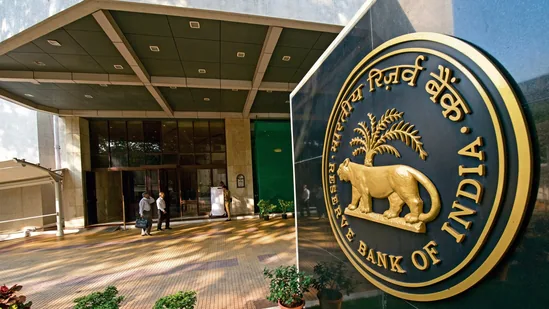Revised Safe Deposit Instructions by RBI: Analysing the Liability Clause
[By Mansi Verma] The author is a student of Gujarat National Law University. Introduction Bank locker facilities continue to hold the popularity of bank’s customers as a secured safety vault guarded by the bank’s infrastructure. They keep the customer’s valuables, and any changes in such facilities’ operation directly impact the hirer. In this blog, the author primarily seeks to analyse how the new liability clause recently implemented by virtue of Reserve Bank of India (“RBI”) Locker facilities/Safe Deposit facility guidelines would affect the Banker Customer relationship vis a vis the position prior to the insertion of such a clause and what are the issues and challenges associated with the enforcement of the clause while proposing solutions for the benefit of the customers of a bank. RBI’s Safe Deposit Locker instructions Apart from performing their core functions of receiving money on deposit for the purposes of lending, commercial banks also perform several other ancillary functions in addition to their core functions, which include Agency Services and General Utility Services. The Safe Deposits Vaults, Safety Lockers or Bank Lockers form a part of a commercial bank’s General Utility Services. RBI, as the primal monetary authority of the nation, has powers under sections 35A, 45ZC and 45ZF of the Banking Regulation Act, 1949 Act read with Section 56 of the same Act to issue binding directions to the banking companies in the public interest. In exercising such powers, RBI issued the new binding Instructions on Safe deposit vaults (“revised instructions”), making the banks liable in case of loss of items placed in the locker under certain circumstances. Part VII of the revised instructions lays down the compensation policy and liability for Banks in cases of natural calamities, and Instruction Number 7.2 lays down “bank’s liability in events like fire, theft, burglary, dacoity, robbery, building collapse or in case of fraud committed by the employees of the bank”. The revised instructions entrust the liability of the bank to the tune of compensation if the events occur due to the bank’s own negligence with no fault on the part of the customer. When the events mentioned in instruction number 7.2 occur, the bank shall pay compensation amounting to 100 times the prevailing annual rent of the safe deposit locker. In light of the revised instructions, a timeline till 1 January 2023 was specified for the banks to renew their locker agreements with the existing customers incorporating the liability clause and ensuring the inclusion of fair terms. The Liability Clause: Issues and Challenges Including this clause in the new locker agreement is a promising provision in that it provides recourse to law for the customers availing the facility. However, long waiting lists make it difficult for the common man to avail the locker facilities and put their valuables in safe custody. In this regard, the Banks are undoubtedly in an advantageous position considering the stringent terms and conditions a customer must adhere to in the memorandum of letting. In this way, including the liability clause is a progressive step towards ensuring transparency and enhanced locker security standards. Examining the nuances of the provision, it is clear that the provision opens the legal avenues for the grant of relief to a helpless locker holder who suffered the loss of items and had no remedy against redeeming the cost of the locker items because prior to the coming of the guidelines, the locker agreement contained a waiver of liability clause which ensured that the bank would not incur any liability to insure them. The current position of law requires the remedy to be sought in the court of law. The provision requires that the events mentioned in the provision must occur on the premises of the banks due to their own negligence, shortcomings or any act of omission or commission. This puts the burden of proof of negligence on the part of banks upon the customers. The Distorted Balance of power There is strong jurisprudence to show that it has been extremely difficult for the complainant customers to show knowledge on the part of the banks with respect to the contents stored in the locker as well as negligence on the part of the banks as it is standard industry practice for the banks to disclaim liability for the loss of goods kept in the locker. The cases of Mohinder Singh Nanda v. Bank of Maharashtra and Atul Mehra v. Bank of India are the most appropriate cases to show the distorted balance of power. In both these cases, the appellants could not prove knowledge of locker contents on the part of the respondent banks and could also not show the presence of the goods inside the locker. Hence even when there was a breach of duty on the part of the banks to take reasonable care of the goods, they could not be entrusted with the liability of the missing articles of the locker. The courts undoubtedly took a liberal route by lowering the threshold of proof for the customers, but that provided some respite. The national commission in Pune Zilla Madyawarti Sahakari Bank Limited v. Ashok Bayaji Ghogare even held that an affidavit of the locker holder, if not impeached by cross-examination can be accepted to prove the locker contents. However, even this was not very helpful as compelling evidence of the bank’s negligence and knowledge has to be shown by the customer claiming compensation. The issue of disparate positions taken by the banks regarding their relationship with the customer with respect to the contents of the locker was one of the astute observations made by the Competition Commission of India in the case of Amitabh Dasgupta v United Bank of India (Amitabh Das Gupta). The basis of making such an observation was non-uniform practices followed while assigning liabilities by commercial banks. The banks exhibited non-uniformity as some of them considered the facts and circumstances surrounding the loss of goods to assume liability, some strictly adhered to the conditions set out in the memorandum
Revised Safe Deposit Instructions by RBI: Analysing the Liability Clause Read More »









